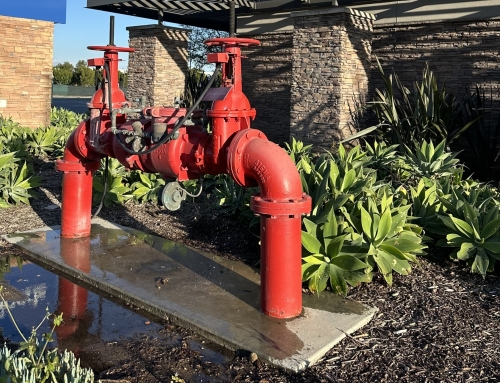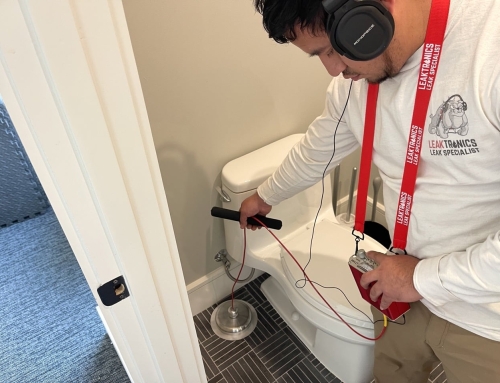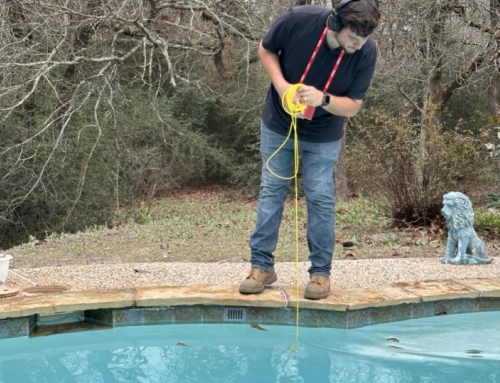Detecting leaks in vinyl-lined pools
When it comes to detecting leaks, vinyl-lined pools have always posed their own set of challenges. They are larger than most other types of pools and, as a result, testing can take more time and effort. Leak detection technology made specifically for these pools work off the same general idea (listening for leaks), but has been tailored to scan the liner, too.
By placing a float with a metal plate into the pool, the technician is able to introduce a small square voltage current that evenly blankets the entire pool. Vinyl acts as an insulator, while a small hole or tear acts as a ground. The flow of electricity in the pool will immediately seek out the ground. Probes are then used to scan the floor and walls of the pool. Working much like a voltmeter to find the ground, it creates a beeping noise at the point of a leak (ground). While false-positives can plague this type of leak detection, there are steps technicians can take to minimize them (e.g. using a hydrophone to check for any metal in the pool prior to the square voltage to confirm there is, in fact, no leak).
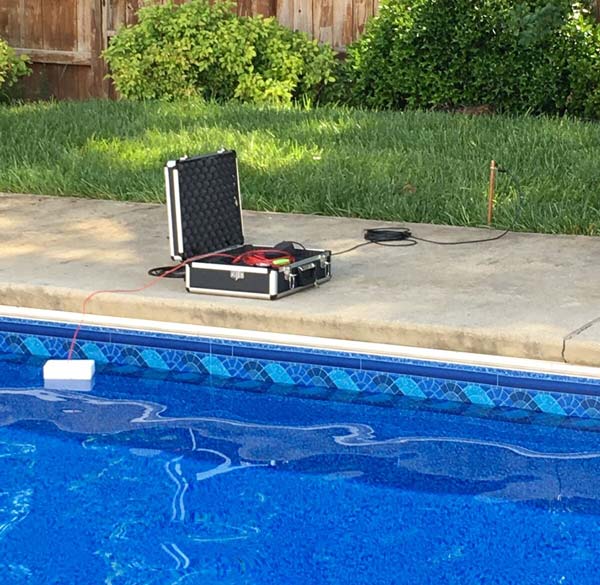
Locating leaks in concrete pools
Structural cracks found in the floor or walls of concrete and gunite pools can be detrimental to the structural integrity. When concrete moves and shifts, it will crack and the extent of the damage depends on the amount of movement. Shifting can occur due to earth movement, settling, or poor workmanship during construction. Over time, as water seeps through the structural crack, it will erode the soil and cause even more shifting. If left unrepaired, voids in the concrete could occur. Further, cracks and voids will not only become larger, but also more expensive to fix. No matter how much or little the structural crack is leaking, it needs to be repaired 100 per cent of the time, and as soon as possible.
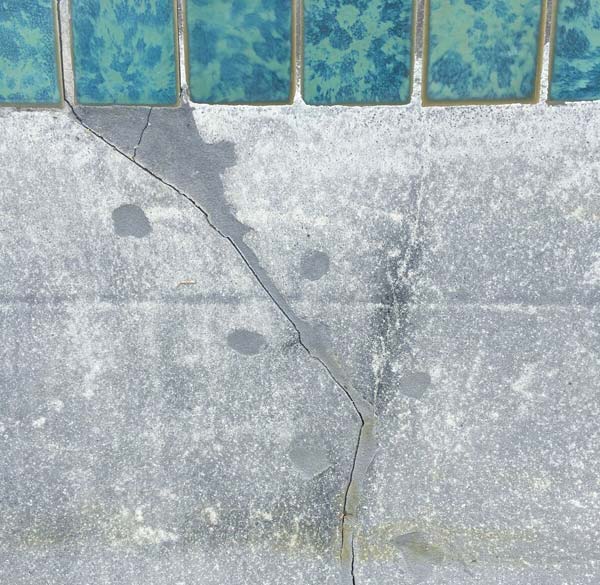
When a crack in a concrete pool is spotted, a leak detection scan must be performed. In the past, when a technician spotted a structural crack, his/her only course of action was to dive into the pool in a wetsuit and slowly dye test the entire crack. However, electronic leak detection equipment has come a long way. With new hydrophone technology, locating leaks due to structural cracks has become more accurate and a lot easier to perform.
The weight of the water trying to push its way through any open spaces in the crack will create a distinct ‘whooshing’ noise. Using the same hydrophone equipment that can locate leaks within a vinyl-lined pool, the technician can now simply drop the microphone into the pool and listen to every section of the crack. By slowing dragging the hydrophone along the midline of the structural crack, the technician can pinpoint where the leak (or leaks) are located by listening for the area(s) where the sound is the loudest.
Once the leak is found, a dye test can be used to back up what was heard when using the hydrophone. After all of the leaks have been located and confirmed, the pool can be drained and repaired.
An increasing number of pool service companies are adding leak detection projects to their business offerings, as it takes less time and effort than in the past thanks to the advancements in technology to tailor-made equipment specific to the aquatics industry. While these new tools may appear intimidating to some, the abundance of educational resources available for pool technicians makes it easy for any company to offer leak detection services.
Ten tips for a successful leak detection
- Gather as much information as possible prior to arriving on the jobsite. When a customer calls, try to get a good understanding of the situation based on the initial conversation. This is also a good time to ask questions such as, “Is the pool full?” “Is the pool clean?” “Why do you think your pool is leaking” “Have you had any pool repairs done recently?”
- Take the detailed leak-related information the homeowner provides with a grain of salt. While a the husband may be sure the pool dropped 102 mm (4 in.) overnight, the wife may say something entirely different. Keep the information the client provides in mind, but always investigate.
- Almost 95 per cent of all leaks are within a 0.9-m (3-ft) radius of the pool shell. This is known as the ‘strike zone.’ These areas include skimmer seams, light niches, conduits, main drains, structural cracks, and beam breaks, etc.
- Never chase water. A puddle of water in the yard does not indicate where to start digging. Finding the source of the leak is always top priority.
- Five per cent of all pool leak detection calls are not actual leaks. In many cases, a tenant or pool service technician may have left the water running and the pool drained to the proper level, or a family member may have left the filter in backwash mode.
- Make sure the pool water is clear and at the proper level. This point cannot be stressed enough. A visual inspection cannot be completed if the pool water is not clear. Further, a full leak detection test cannot be performed on a half-filled pool. When working with plaster pools, the plaster must be completely hydrated for 24 hours, otherwise the only sound the hydrophone will pick up is a loud crackling noise.
- Do not overlook the obvious. Check the backwash valve and walk around the pool looking for water. The presence of water can confirm a leak and can provide a clue in the investigation. Remember, never chase water.
- First impressions are everything. Always arrive to the jobsite on time, dress professionally, and have business cards ready.
- Do not use pressure testing as the first test. Use it as a last resort.
- Always keep the customer informed and provide them with paperwork. Record dye tests with a camera to show the client. Give them a chance to listen to the leak and provide them with an accurate, detailed report of the findings. Finally, always follow up with a repair estimate.


